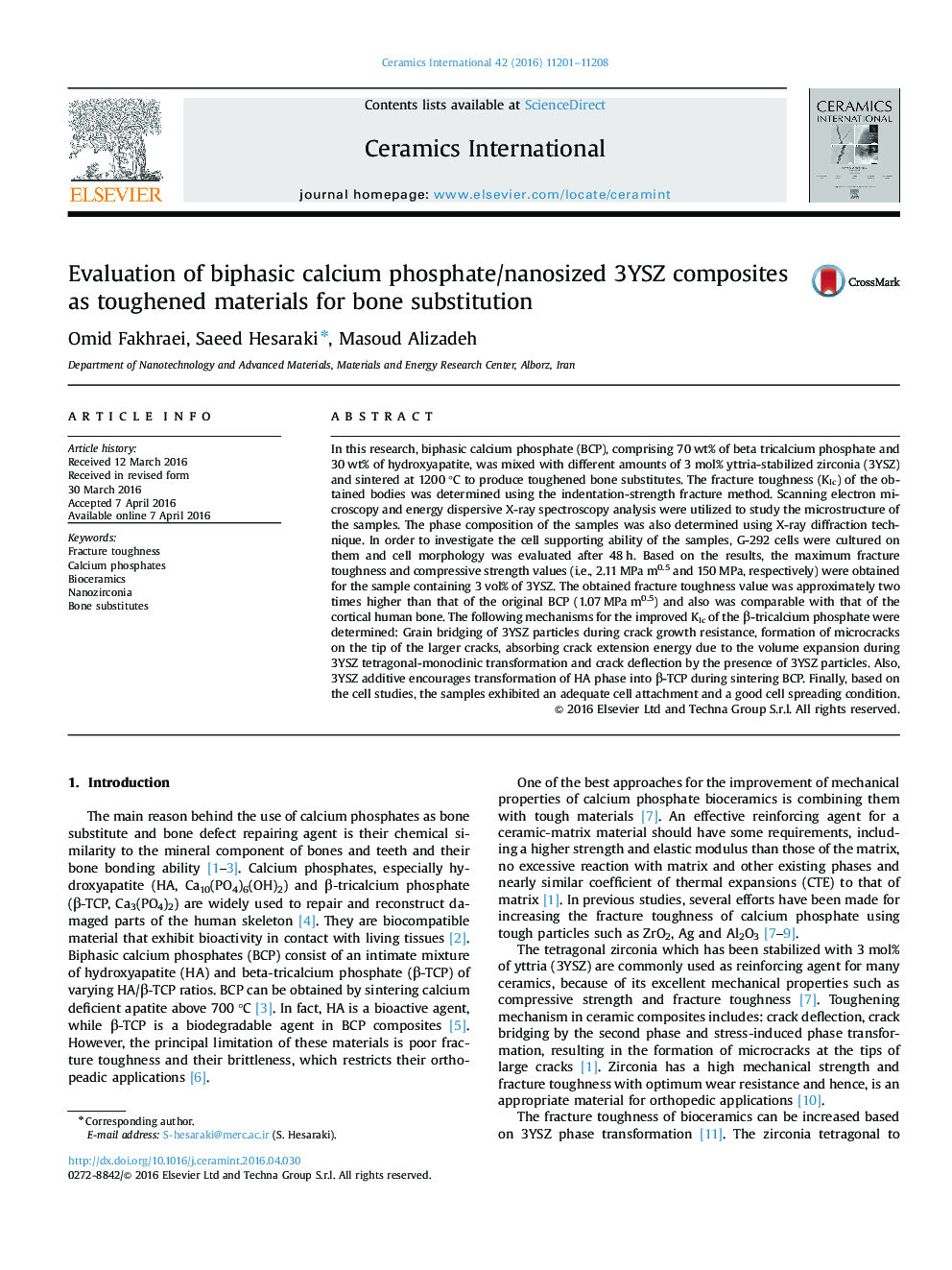| Article ID | Journal | Published Year | Pages | File Type |
|---|---|---|---|---|
| 1458677 | Ceramics International | 2016 | 8 Pages |
Abstract
In this research, biphasic calcium phosphate (BCP), comprising 70 wt% of beta tricalcium phosphate and 30 wt% of hydroxyapatite, was mixed with different amounts of 3 mol% yttria-stabilized zirconia (3YSZ) and sintered at 1200 °C to produce toughened bone substitutes. The fracture toughness (KIc) of the obtained bodies was determined using the indentation-strength fracture method. Scanning electron microscopy and energy dispersive X-ray spectroscopy analysis were utilized to study the microstructure of the samples. The phase composition of the samples was also determined using X-ray diffraction technique. In order to investigate the cell supporting ability of the samples, G-292 cells were cultured on them and cell morphology was evaluated after 48 h. Based on the results, the maximum fracture toughness and compressive strength values (i.e., 2.11 MPa m0.5 and 150 MPa, respectively) were obtained for the sample containing 3 vol% of 3YSZ. The obtained fracture toughness value was approximately two times higher than that of the original BCP (1.07 MPa m0.5) and also was comparable with that of the cortical human bone. The following mechanisms for the improved KIc of the β-tricalcium phosphate were determined: Grain bridging of 3YSZ particles during crack growth resistance, formation of microcracks on the tip of the larger cracks, absorbing crack extension energy due to the volume expansion during 3YSZ tetragonal-monoclinic transformation and crack deflection by the presence of 3YSZ particles. Also, 3YSZ additive encourages transformation of HA phase into β-TCP during sintering BCP. Finally, based on the cell studies, the samples exhibited an adequate cell attachment and a good cell spreading condition.
Related Topics
Physical Sciences and Engineering
Materials Science
Ceramics and Composites
Authors
Omid Fakhraei, Saeed Hesaraki, Masoud Alizadeh,
